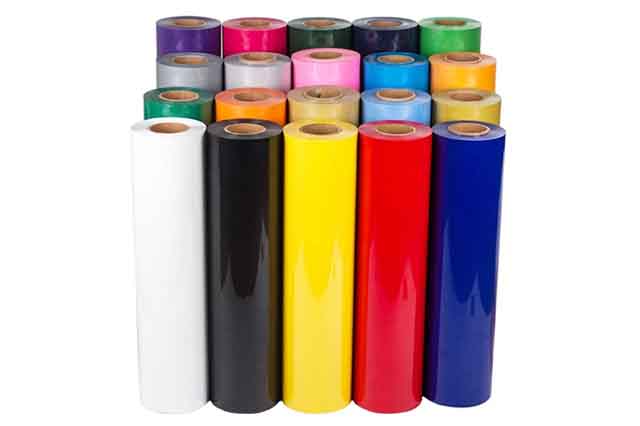
Heat transfer vinyl (HTV) printing is a popular fabric printing method used by many businesses and individuals alike.
HTV printing involves printing graphics or designs on a special type of vinyl material using a cutting plotter and a heat press machine. The vinyl material is then applied to a fabric item such as a shirt, hat or bag using a heat press machine.
The heat from the press melts the glue on the back of the vinyl, allowing it to adhere to the fabric and create a permanent design.
The HTV printing process is quite simple and requires minimal skill and effort. It is considered one of the easiest and most effective ways to adjust fabric items in a design of your choice.
It’s also a great way to create personalized gifts for friends and family.
safety messures
Since HTV printing requires heat, it is important to take all necessary safety measures. The first step is to make sure that the environment in which you work is well ventilated. In addition, you should also use heat-resistant gloves. It is important to pay attention not to touch the heat plate of the heat press, such a touch could lead to a burn.
HTV printing preparations
HTV printing is done by first selecting the vinyl to be printed on. It is important to note that each type of fabric has its own type of vinyl – nylon fabric shirts will need low temperature glued vinyl while cotton shirts will be better off using normal vinyl.
It is important to make sure you know the instructions for using vinyl – the degree of heat, the pressing time and whether the vinyl is intended for hot or cold peeling.
Another thing to pay attention to is the selection of the graphic for printing – HTV print is made by cutting the vinyl, therefore small details in the graphic may create a problem when cutting and peeling the material.
Make sure that the vinyl is placed in the correct way on the cutting plotter – the vinyl has a side with the glue on it (the glue is not noticeable) and a transparent side which is the carrier. It is important to make sure that the side of the carrier is the bottom side when you put the vinyl into the cutting plotter.
HTV printing process
The process of printing with heat transfer vinyl (HTV) usually includes the following steps:
Creating a design:
Using design software such as Illustrator or Inkscape, create the design you want to print on the HTV. Convert the design to a format compatible with the vinyl cutter, such as a .svg or .dxf file. Please note – the file must be a vector file in order for the cutting plotter to be able to read it.
Cutting the HTV:
Cut the HTV with a vinyl cutter to create the artwork. A weeding tool can be used to remove the negative spaces of the vinyl. After finishing the cutting with the plotter, peel off the remaining vinyl that is not intended to be transferred to the shirt.
Applying transfer film:
Place transfer tape, which is clear adhesive tape, over the cut HTV design. The transfer tape helps transfer the HTV onto the fabric. This step is only required on printed vinyl, vinyls that are only intended for cutting have a carrier that is used as a transfer film.
Location on the canvas:
Place the HTV design with the transfer film on the fabric where you want the design to be printed. The fabric can be any material such as cotton, polyester and synthetic fabrics.
Hot press:
Use a heat press to apply heat and press the HTV design, adhering it to the felt. It is important to use the correct temperature and time and pressure, according to the recommendations of the HTV brand.
Peel off the transfer tape:
After the HTV design is adhered to the fabric, carefully remove the transfer tape, making sure the design is properly adhered to the fabric.
Let it cool:
Allow fabric to cool before wearing or using.
Note that the above process may vary depending on the type of HTV, fabric and machine used, it is important to follow the instructions for the HTV brand you are using and also the machine instructions.
HTV printing is a great way to create our unique and personal clothes. The materials and equipment needed to print HTV are easy to find, and the process is easy to learn. This makes HTV printing an excellent choice for those of us who want to create our own custom designs for clothing and other textiles. With its low cost, fast delivery time and excellent quality, HTV printing is sure to appeal to a variety of customers.
